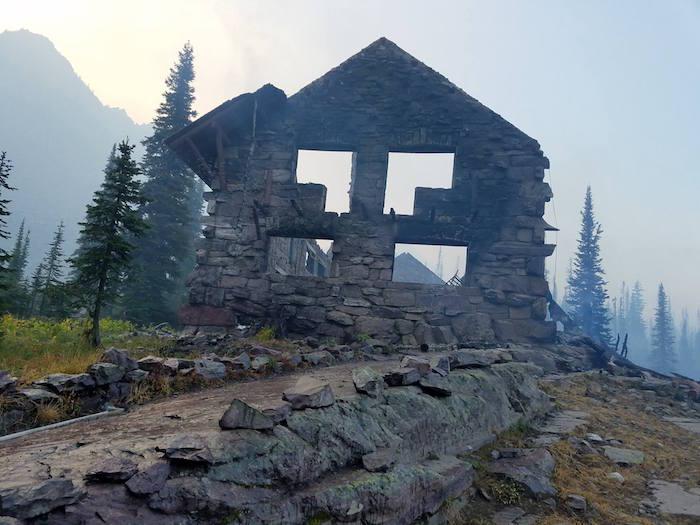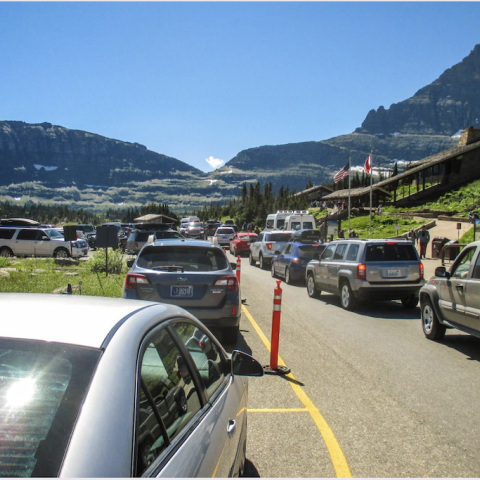
The remaining structure of Sperry Chalet after it was engulfed by the Sprague Fire this summer / NPS
Amid freezing rain and a foot of snow in Glacier National Park, 10 crew members spent 12 days stabilizing the remains of the historic Sperry Chalet, which was deemed lost when the Sprague Fire engulfed the dormitory building on August 31.
Last Monday, they finished bracing the walls, gables, windows, and chimneys of the chalet, which dates to 1913 when the Great Northern Railway worked to promote Glacier as a destination for travelers. The effort will help protect the walls against pressure exerted by heavy winter snow and storm winds. Located just southeast of Lake McDonald and to the west of Gunsight Mountain, the building lost its roof and floors in the fire, which put the structure at increased risk of destabilization.
Preliminary assessments indicate that the majority of the stone masonry walls remain relatively intact. However, stabilization crews noted that the walls appeared to have suffered more heat damage toward the roofline. It is also likely that one or more of the dormer windows may fail this winter, despite stabilization efforts, due to the level of damage.
In the spring, the park will assess how the structure weathered the winter and determine next steps.
“I am so pleased that the crew was able to complete the project despite 12 inches of snow and freezing rain, and particularly happy that we were able to do this with no injuries to anyone on the crew,” Glacier facility operations specialist John Lucke, who was onsite for the stabilization effort, said in a release. “I think it’s safe to say that the entire crew is glad to have been a part of protecting what is left of the structure, and would like to thank the Glacier Conservancy for that opportunity.”
The engineering assessment and subsequent stabilization work was funded nearly entirely by the Glacier National Park Conservancy. The Conservancy, the park’s official philanthropic partner, raised enough funds for the work amid the urgent time constraints with approaching winter weather.
In all, the crew put in more than 100 beams and 24 sheets of ¾-inch plywood. It took 15 helicopter trips to transport all of the materials. Each beam weighed 140-180 pounds. The stabilization recommendations for the necessary work were completed by engineering firm DCI+BCE.
The trail to Sperry Chalet is currently closed and impassable, as are other trails in the Sprague Fire area. Nearly 2,000 trees fell across trails as a result of the fire, and Glacier officials estimate that another 1,000 may come down across trails this winter. The standing hazard trees are considered very hazardous, and trail crews will begin work in the spring to address remaining hazards that have not fallen as a result of winter snow.
In addition to work at Sperry Chalet, the park is also beginning work along Going-to-the-Sun Road and in the Lake McDonald Lodge area to reduce the potential for winter and spring flooding following the fire. Most work will occur in the Sprague and Snyder Creek drainages and will include cleaning out existing culverts, some creek rechanneling, and footbridge modification.












Comments
All of this is very heartening. From here, restoration is the next logical step. Three cheers for the National Park Service and the Glacier National Park Conservancy. This is exactly what their missions entail. The loss of Sperry Chalet need not be permanent, and at least some of its original stonework can survive. As I said, I like reading stories like this, and this one made my day.